The Singaporean bespoke shoemaker who dreams of stepping onto the world stage
In 2015, Josh Leong started offering bespoke shoe services, and he hasn't looked back since, dipping his toes in various businesses such as Palola, Seamless Bespoke and his own Josh Leong and Heirloom by Josh Leong brands.
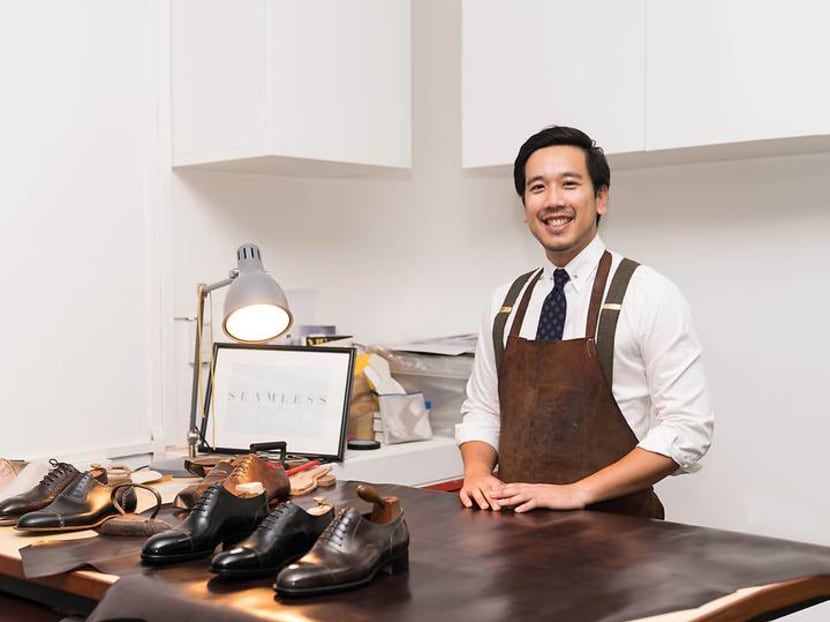
(Photo: Josh Leong)
For most men interested in fashion, owning a pair of bespoke shoes is one of several aspirational grails, the kind of thing you treat yourself to only when money is no object – especially in a country like Singapore, whose humid climate pretty much turns any shoe cabinet into a mould incubator.
Between the potential for mould, the rain and the chances of someone accidentally scuffing your shoe, an investment in bespoke shoes is something you can only do if you neither sweat the small stuff nor need to worry about the expense.
For those who do fit into this category, in the past, commissioning a pair of bespoke footwear would have required a trip to Europe or Japan. And no, those cheap “custom” shoes you had made on holiday in Hoi An are definitely not what any self-respecting shoe lover would consider bespoke, let alone worth wearing in public.
READ: Creative Capital: Ken Kwek, the introverted auteur who finds his voice in films and plays
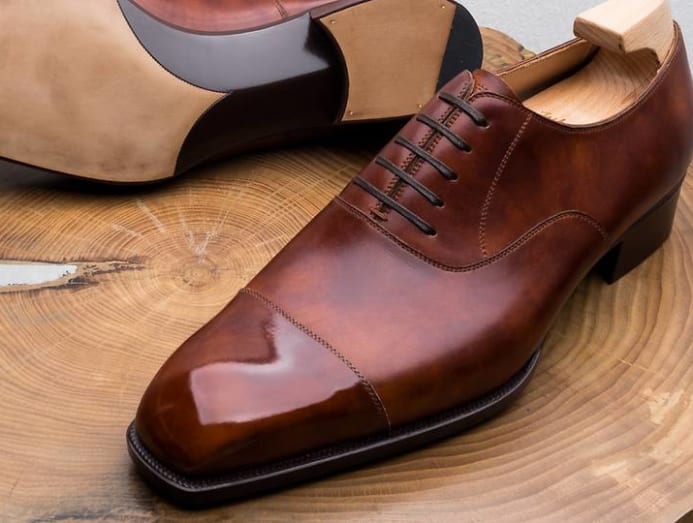
Enter Josh Leong, who has been making a name for himself ever since he started offering bespoke shoe services in 2015. Fine dress shoes are offered under the brand “Josh Leong” while “Heirloom by Josh Leong” focuses on casual footwear like sneakers and driving loafers. In 2016, Josh partnered with Jeremiah Ang from The J.Myers Company to found the brand Palola, which features women’s ballet flats and loafers. And in 2017, Josh partnered with Lusso Tailors and local shoe enthusiast Winston Liang to form Seamless Bespoke, a unique “boutique and atelier” concept that produces bespoke clothing and shoes made in-house by their team of artisans.
READ: Creative Capital: The woman putting Singapore industrial design on the map
HI, JOSH. DO YOU CONSIDER YOURSELF AN ARTIST, A CRAFTSMAN, AN ENTREPRENEUR, OR ALL OF THESE?
I think when you're running a small, craft-based business like a bespoke shoemaking brand, it's important to recognise that you need to have the ability to adapt and wear different hats when the situation calls for it. For example, when I'm designing for my sneaker collection or when I'm designing a client's bespoke dress shoes, I need to pull out my artist hat and get into designing mode. Likewise, when I'm in the process of making a pair of shoes, precision and an eye for the tiniest details are probably two of the most important aspects when it comes to crafting a well-made pair of shoes. In my opinion, the most difficult of the three roles is actually the entrepreneurship role, as very often, the very core of a handcrafted business or product runs contrary to the main objective of any business – which is to make as much money as possible. The very nature of a handcrafted business is that it is very difficult to scale, and that as a business, it's always going to be difficult to juggle how profitable the business can be, versus offering customers products that are made to the highest standards in terms of materials and workmanship.
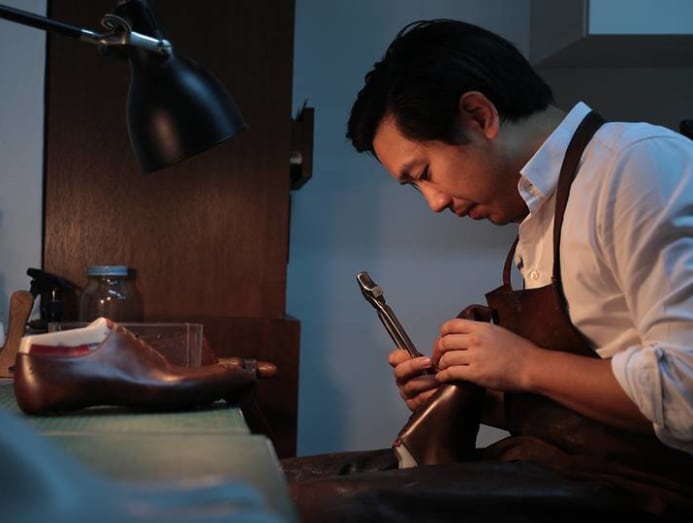
HOW DID YOU FIRST DISCOVER YOUR LOVE FOR SHOES AND THEN SHOEMAKING?
As a teenager, I was always saving my pocket money to get a new pair of sneakers, and my personal collection of shoes was always larger than my entire family's collection combined!
Shoemaking was actually something that I stumbled into more than something that I had always wanted to pursue. It all started with a love for leather, which led me to dabble in leather-crafting as a hobby. When I decided to turn this hobby of mine into a career, I moved to Florence, Italy, to enrol at a trade school that taught both bag-making and shoemaking courses. As soon as I started learning how to make shoes, I was hooked. It was one of those life-changing moments when I realised that the shoemaking industry was where I wanted to be for the rest of my career. The thing that I love about shoemaking is that it is the perfect combination of the arts, in terms of the lines and the designs, and science, how we calculate certain measurements that affect the fit and function of the shoes. Every single one of the more than 100 steps in the shoemaking process has a compounding effect on the next step, and an accomplished shoemaker is one who is able to execute as many of these different steps as cleanly and precisely as possible.
TELL ME MORE ABOUT YOUR EXPERIENCE OF TRAINING IN ITALY. HOW LONG WAS IT? WHAT WAS EACH DAY LIKE?
The one year that I spent in Italy making shoes was probably one of the happiest years of my life! I have the fondest memories of making shoes with my fellow students and apprentices, learning from my masters, visiting the suppliers and factories around Florence, sourcing for the best materials and components for shoemaking. A typical day as a bespoke shoemaking apprentice starts at 8am in the morning, and usually lasts until 7pm at night. While the craft of shoemaking is physically very demanding, there is a somewhat therapeutic, calming effect that washes over me when I'm in the workshop. The sounds inside a shoemaking workshop are what I remember and treasure the most – hammering, rasping, the sound of knives being sharpened and the sound of threads being pulled through the welts and soles as we stitched each pair of shoes by hand.
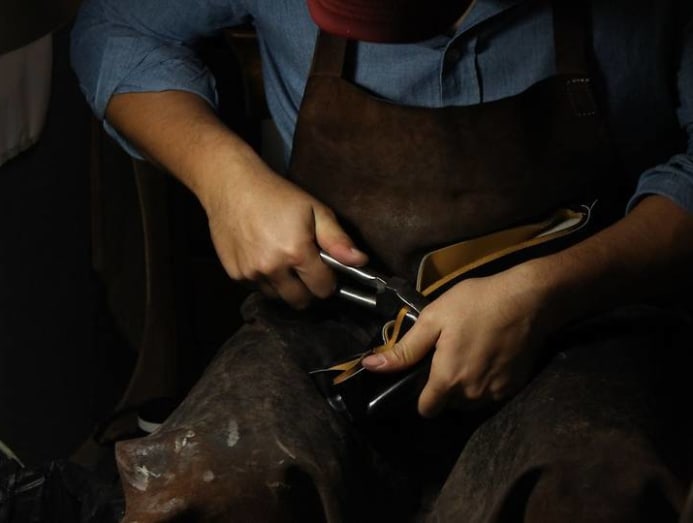
WHAT DID YOU DO PREVIOUSLY? WHAT WAS YOUR PROFESSION AND DID YOU ENJOY WHAT YOU DID?
I've been a competitive tennis player since the age of nine, so tennis has always been a huge part of my life. After I graduated from Anglo-Chinese Junior College, I started coaching my juniors in the school team as a fun way to earn a little extra pocket money. I soon realised that I enjoyed coaching, and I continued to do it on a part-time basis throughout my university days. Upon graduating from Singapore Management University, I worked in advertising sales for a year, but left to pursue a full-time career as a tennis coach, coaching both ACJC's competitive tennis team as well as my own private students. I did enjoy my time as a tennis coach, but decided that it wasn't something that I wanted to do for the rest of my career, hence, the decision to jump into leather crafting and subsequently, shoemaking.
IS SINGAPORE A TOUGH PLACE TO BE A CREATIVE?
Yes and no. If you're referring to the very abstract, super "out of this world", free-flowing type of creativity that you see most commonly in modern art, then I think Singapore is a tough place for that kind of creativity and expression. My opinion of Singaporeans is that they generally prefer to play it safe and typically don't venture off the beaten track too often, so finding an audience that is able to appreciate very abstract expressions of creativity is tough in Singapore. However, I think that there are many varying degrees of creativity and creative expression, and if you're smart and bold enough to find your creative niche, the local market and the accompanying spending power are able to support these local ventures.
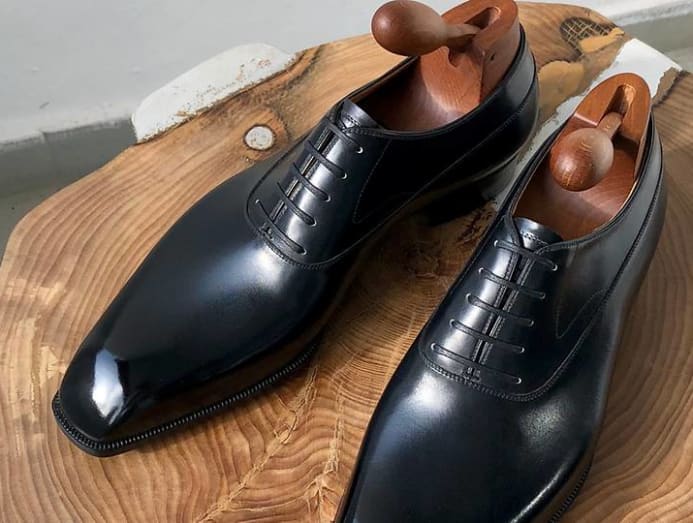
HOW DO YOU FIND YOUR CUSTOMERS?
Bespoke shoes are an ultra niche product. The vast majority of my customers are referred by existing customers or people who have heard my story and seen my work. I've been very fortunate to have had my story picked up by numerous media channels, especially during the early days when I was first starting out, so that helped to accelerate the growth of my brands.
WHAT SHOULD CUSTOMERS UNDERSTAND ABOUT BESPOKE SHOES? WHY SHOULD THEY CONSIDER THIS AS OPPOSED TO OFF THE SHELF?
The first and most important thing that customers need to understand about bespoke shoes is that it is all about the process. The final pair of shoes is really just the end product, but the main beauty of bespoke is derived from the relationship that is formed between the shoemaker and customer. Too often, customers who are new to bespoke place too much emphasis on the finished product, instead of enjoying the process. The more a shoemaker understands the customer, the better the bespoke shoes will turn out. Needless to say, one of the biggest differences between bespoke shoes versus off-the-shelf shoes is that the fit should be just as, if not even more important, than the final aesthetic design of the shoe. I've always likened finding the right bespoke shoemaker similar to finding the right barber, or the right tailor. Once you find the right shoemaker who understands what your feet need, that is what makes all the difference.
READ: Creative Capital: The 19-year-old artist who captures the ocean in miniature
DO YOU EVER HAVE THOSE "WHAT IN THE WORLD AM I DOING" MOMENTS?
All the time! When you're running any kind of small business and you've only got a small team working for you, it's inevitable that you will come across tasks or problems that you and your team have never encountered before, and you will need to embrace the uncertainty or else it will consume you. When I was first starting out, I used to be overwhelmed when faced with the many challenges that were all a part of running a small business. However, as you overcome each of these obstacles, you add each experience to your "bag of tricks", and your confidence grows. These days, you learn to expect that there will always be problems along the way, and that it's all part of the journey as an entrepreneur. I've also learnt that even though you may be the business owner, you don't always need to know how to do everything when running the business - it's more important for you to find and manage a team that has the experience and knowledge to help you to achieve your goals, and it's perfectly all right to sometimes have absolutely no idea what you're doing. The sooner you accept this, the sooner you learn to trust the team that's around you, instead of always micro-managing everything and everyone!
WHAT'S BEEN THE TOUGHEST CREATIVE CHALLENGE YOU'VE FACED SO FAR?
The toughest creative challenge so far has definitely been designing the various collections of women's shoes under my women's brand Palola. I remember when my business partner Jeremiah and I first started designing the first-ever collection of Palola shoes, we showed the designs and colours that we'd selected to some of our female friends. Their first response to the initial prototypes was that the shoes looked like they had been designed by "two straight men" – basically implying that we had chosen colours and designed silhouettes that were nothing at all like what women would like to wear. We took the criticism to heart, and went back to the drawing boards and completely redesigned the entire collection, selecting leathers and colours based on the feedback from our female friends.
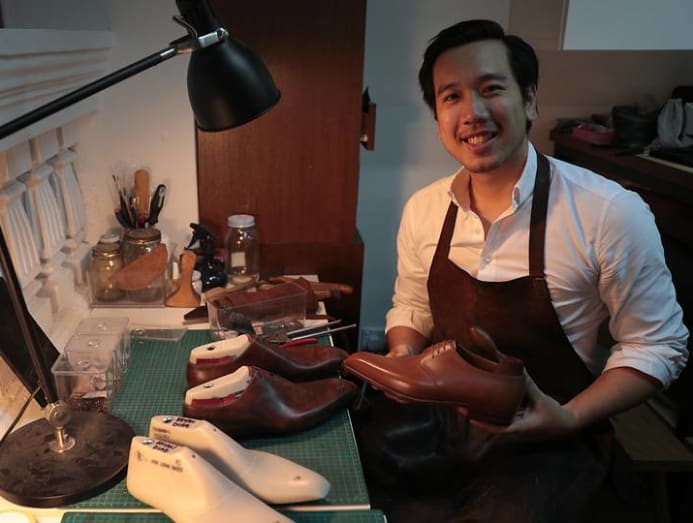
ARE YOU THE ONLY ONE IN SINGAPORE DOING WHAT YOU ARE DOING?
I'm definitely not the only one in Singapore starting his own shoe brands, but I'm quite sure that I'm the only one in Singapore who makes men's bespoke shoes in traditional hand-welted construction.
WHO IS YOUR DESIGN OR CREATIVE HERO?
Tom Ford is a designer I really look up to. Aside from the amazing clothes and shoes that he designs, I admire his work ethic, as well as his incredible attention to detail and his almost OCD-like sense of perfection. He's also incredibly poised, elegant and eloquent - all traits that I admire greatly. I think if you want to excel in any type of creative or design role, you need to have an obsessive-type personality. You have to feel uneasy or uncomfortable when something isn't perfect. That's what drives you and motivates you to always be better.
TELL ME SOMETHING ABOUT YOUR CREATIVE PROCESS I WOULD NEVER EXPECT.
I'm not a natural, gifted designer who is able to draw up something on a piece of paper from scratch. However, my gift is that I'm able to identify what looks nice and what doesn't. In other words, I would like to think that I generally have good taste when it comes to identifying and understanding why some things look nicer than others.
Whenever I start designing a new collection of shoes, I sit down and I scroll through thousands upon thousands of shoes from all sorts of brands, shortlisting those that I feel look nice or have that special X-factor. I pick out the bits of the shoes that I like, and I use all these different elements and combine them together to form my initial design prototype. I never draw or sketch out my first prototype on a piece of paper - I prefer to go straight into drawing the lines and the design directly on the actual shoe last that I will be using to make the prototype shoe. I find that the 3D form of the last gives me a better visual understanding of what the final product will look like, compared to a 2D drawing on a piece of paper.
WHAT’S THE DREAM?
The dream is for my brands to be recognised on a global stage – the market in Singapore is a very, very small market for a product that is as niche as mine, and the only way for my businesses to really scale up is to look beyond our shores at other markets. I've always wanted to leave a business or a legacy of sorts as well for my future children to inherit if they choose to.





